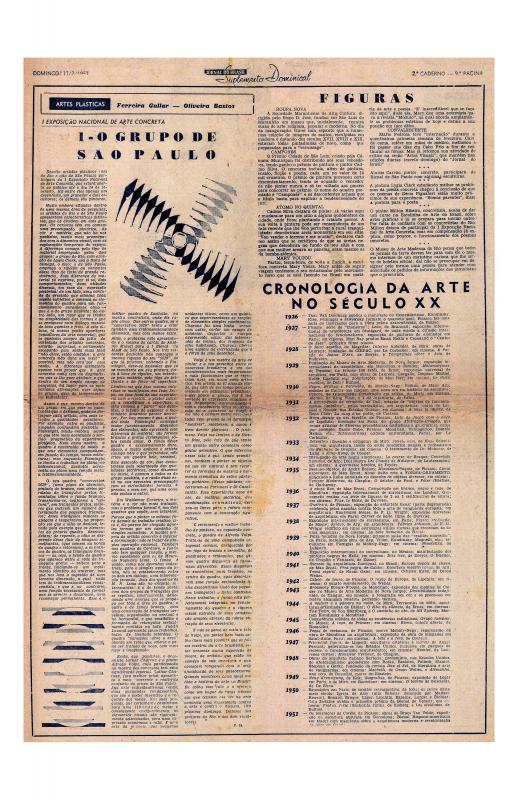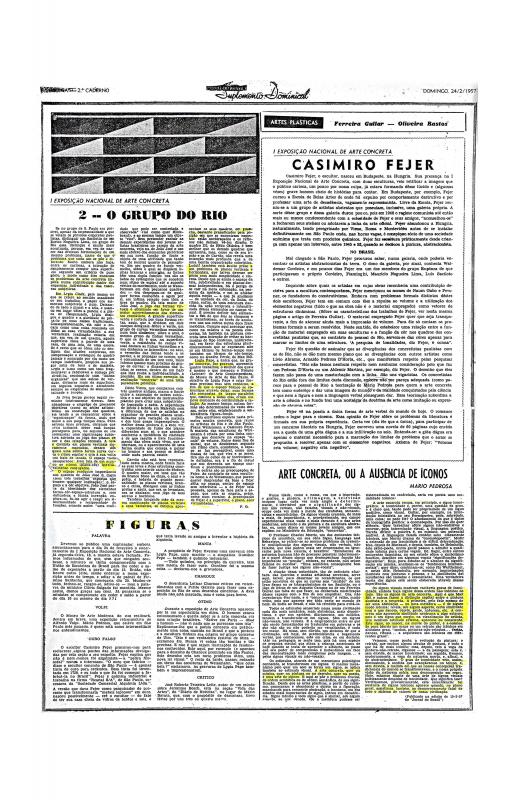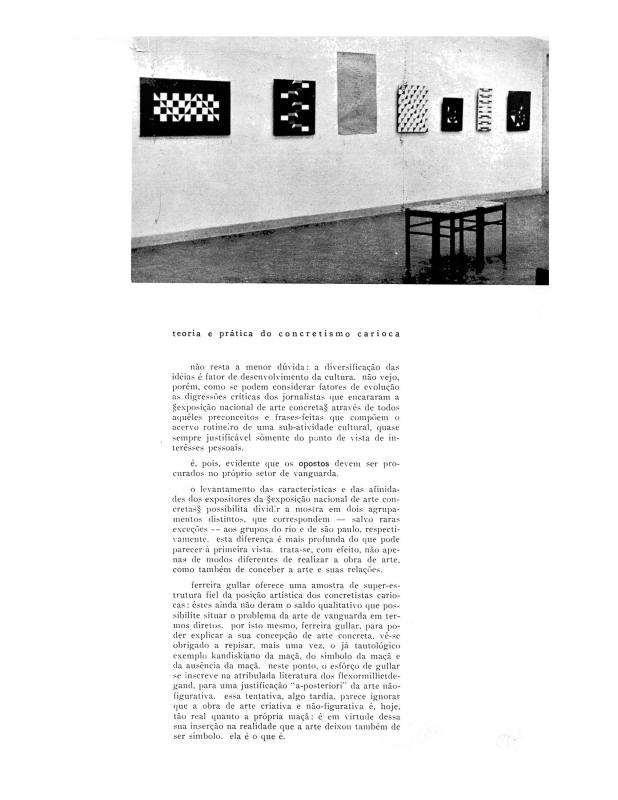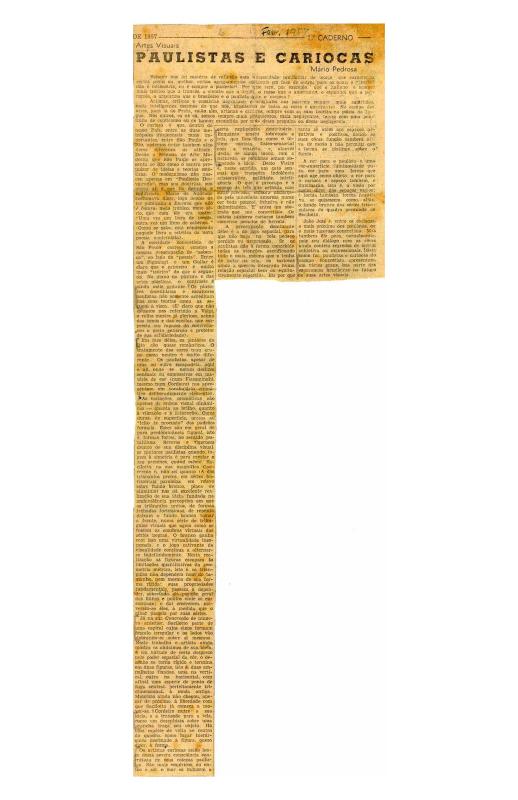This document heralds the break between concretism (São Paulo) and Neo-concretism (Rio de Janeiro). Attention should be drawn to the infelicitous nature of the prefix (Neo) with which this movement was saddled, and which was intended to eliminate the conflict rather than rekindle it. A far better choice would have been something along the lines of “non,” “un,” “anti,” or “counter” (concretism). Despite all that, this is an essential text for understanding a movement that, as it happens, enjoyed its heyday during the time of Brazil’s “Geração ‘80”. The document was written by the poet and critic [José Ribamar] Ferreira Gullar (1930–2016), the movement’s main theoretician, and was signed by the artists Franz Weissmann, Amílcar de Castro, Lygia Clark, Lygia Pape, Reynaldo Jardim, and Theon Spanudis, all of whom participated in the I Exposição Neoconcreta with paintings, sculptures, prints, poems, and prose pieces. The manifesto roundly condemns the rationalist theories of geometric abstraction non-figuration, and calls for a return to a “sensory dimension” in works of art, but does so in contradictory terms by appealing (about six times) to the least pleasant term available: “transcendence.” The manifesto also fails to deny the constructive affiliation of the so-called “Neo-concrete” movement, though it leaves its philosophical underpinnings in no doubt by identifying Gestalt (the psychology of form) as the causal theory and, on the other hand, embracing the objectives of phenomenology at the heart of the movement’s aspirations.
[As complementary reading on the subject of the exhibition, see the following articles in the ICAA digital archive: by Ferreira Gullar “I — O Grupo de São Paulo: I Exposição Nacional de Arte Concreta” (doc. no. 1087166), and “I Exposição Nacional de Arte Concreta: 2 — O grupo do Rio” (doc. no. 1090217); by Waldemar Cordeiro “Teoria e prática do concretismo carioca” (doc. no. 1087287); and by Mário Pedrosa “Paulistas e cariocas” (doc. no. 1085056)].




